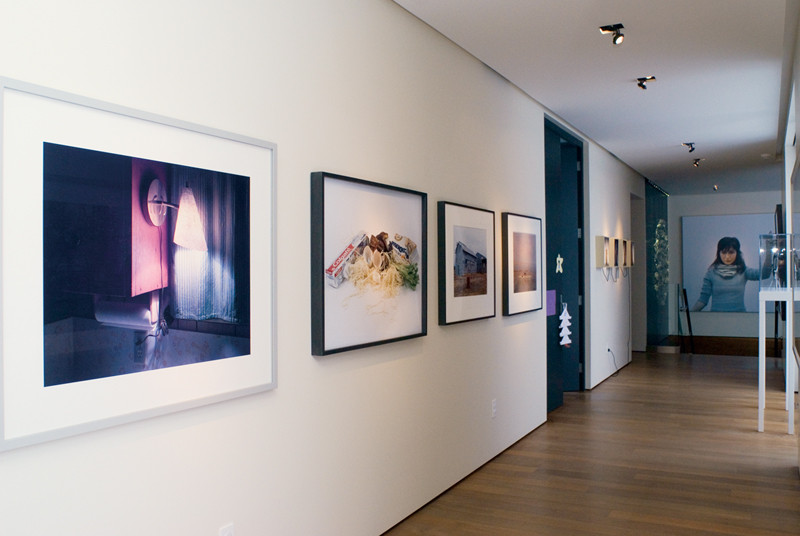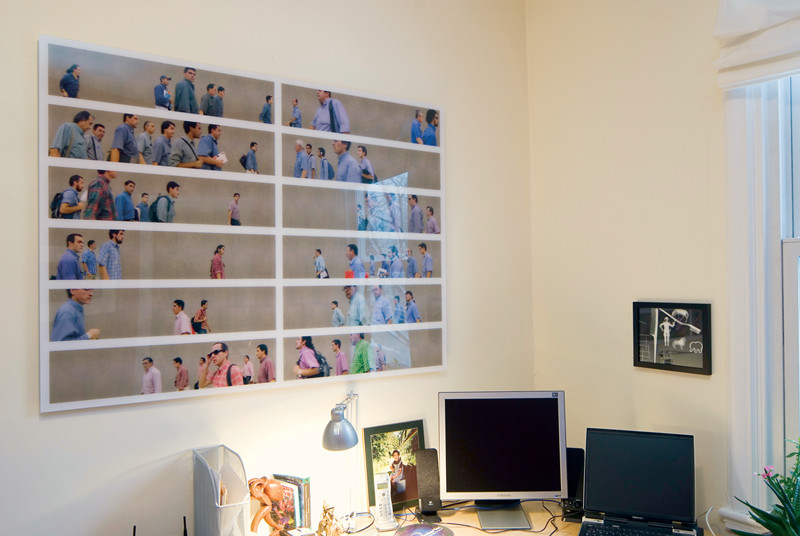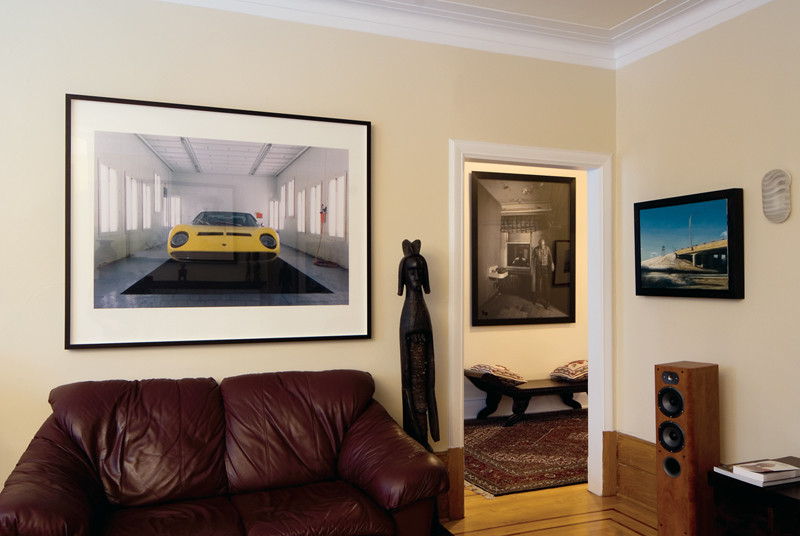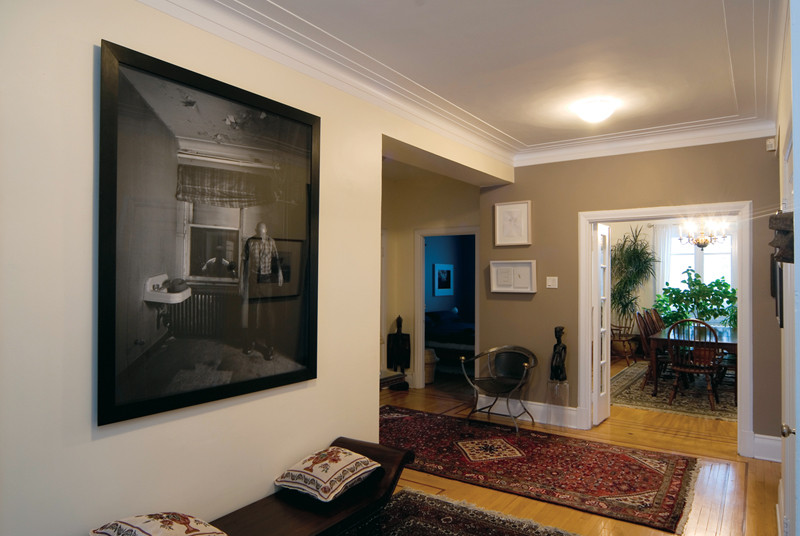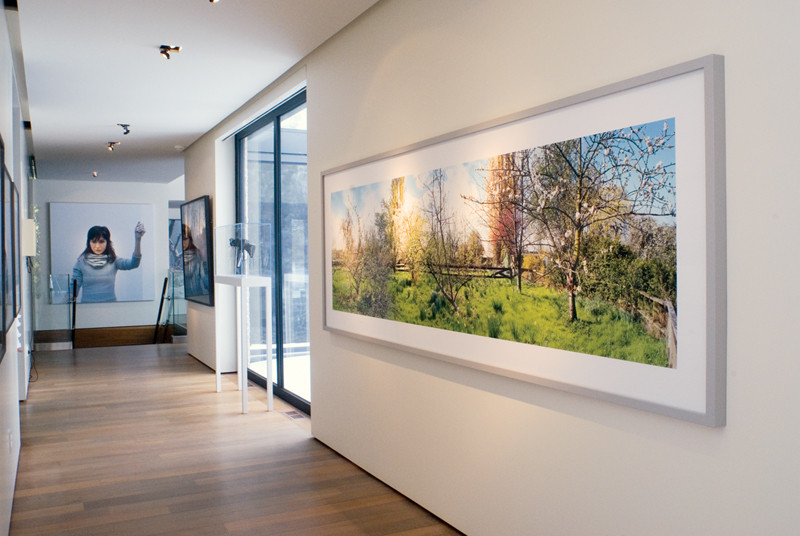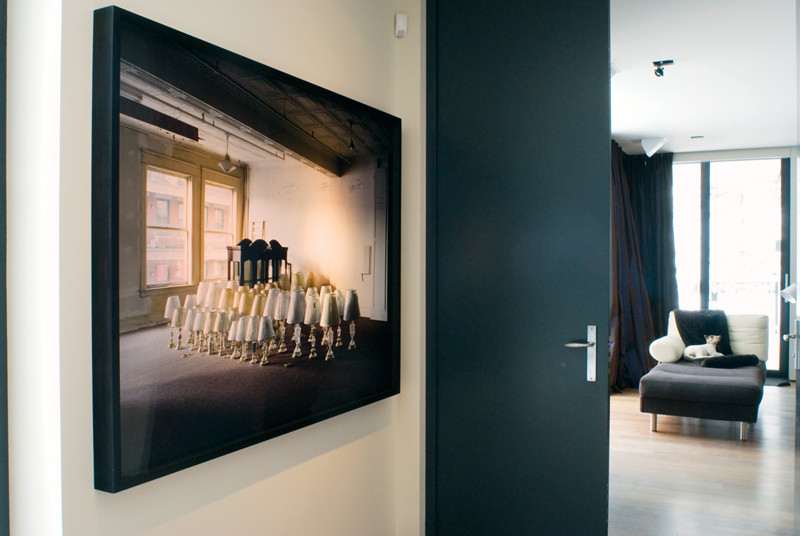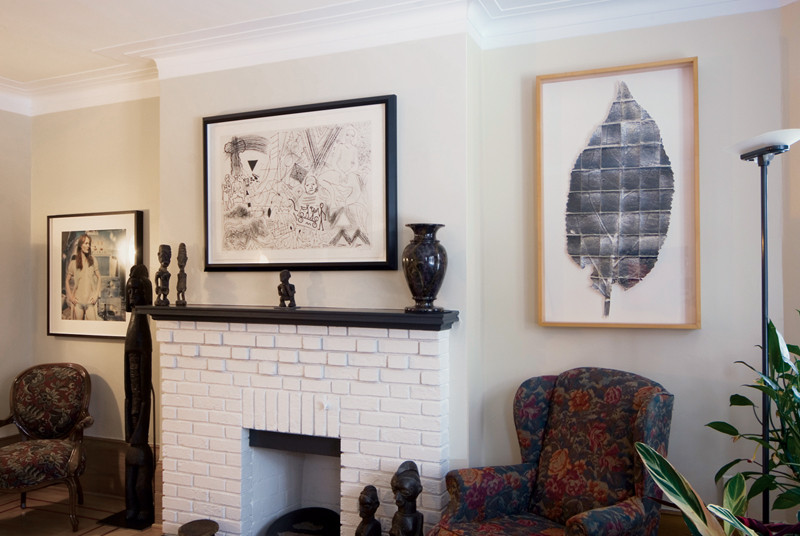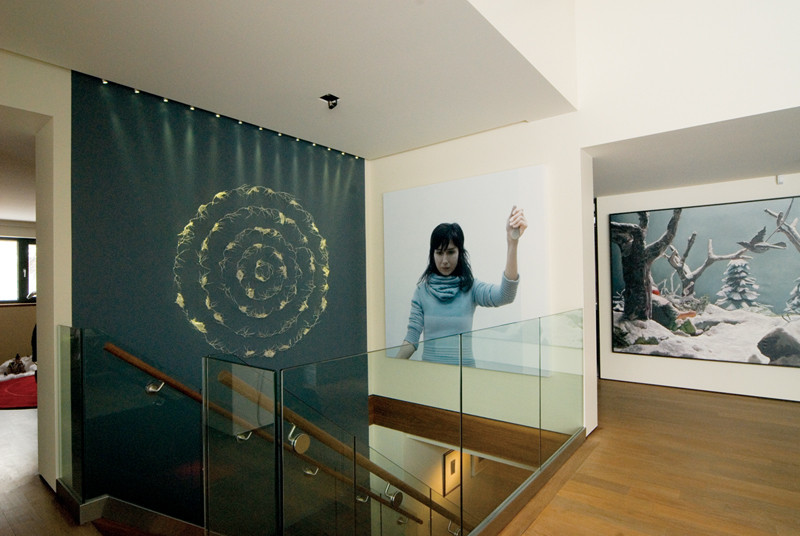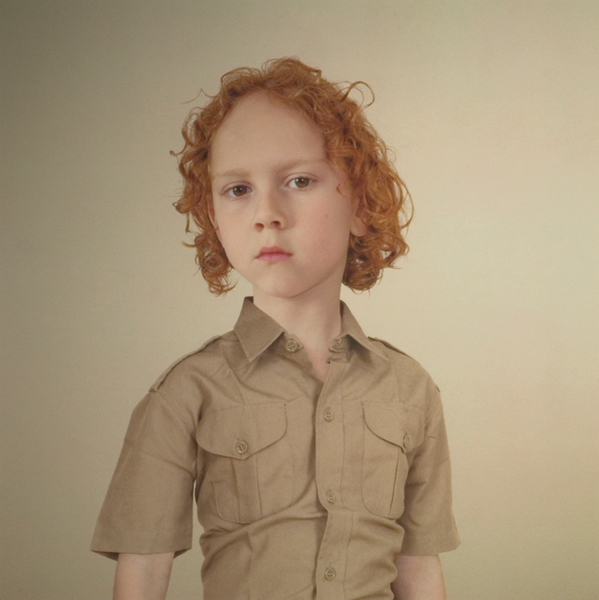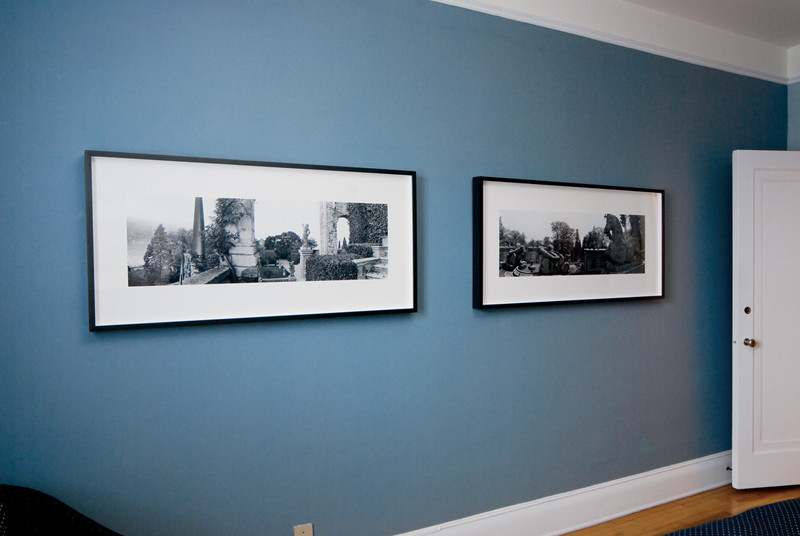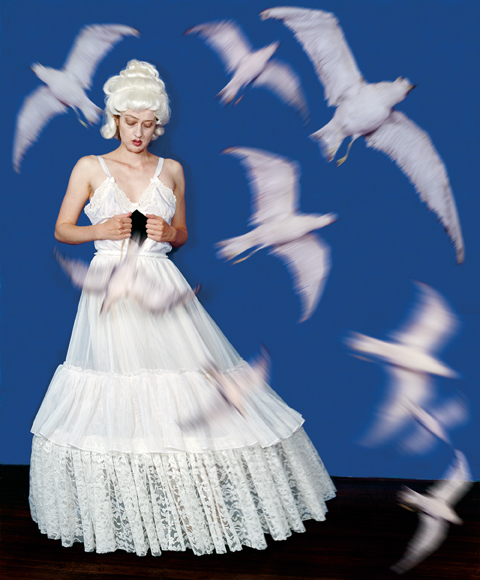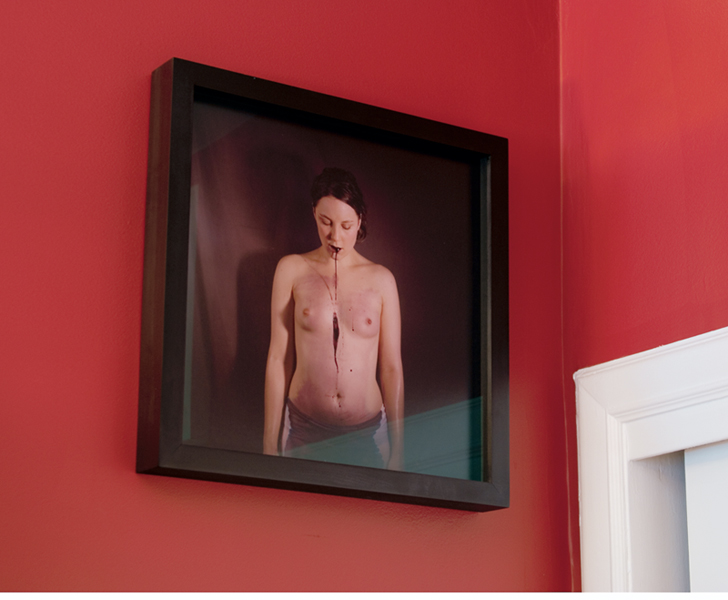[Spring 2008]
by James Campbell
Interest in contemporary photography has reached a fever pitch. In 2006, at Sotheby’s in New York, a huge colour print by Andreas Gursky (dating from 1999) went on the block and sold for $2,256,000. Six months earlier, Richard Prince’s seminal work Untitled (Cowboy), a 1989 Ektacolor print of the Marlboro man, sold at Christie’s for $1,248,000. Works by certain Canadian and international photographic artists are being celebrated worldwide and, not surprisingly, figure prominently in two exemplary Montreal collections: those of Luc LaRochelle and Alexandre Taillefer.
These collections are distinguished by a certain voyeuristic fearlessness – they both thrive on edgy, confrontational work, no holds barred – extensive research and knowledge, and exacting standards. LaRochelle and Taillefer are seasoned veterans, and the avant-garde choices that they have made in other media – Marc Seguin and Trevor Kiernander in painting, for example – are as informed, idiosyncratic, and arresting as those that they have made in the domain of photography. They both look for works by artists who are consistent in quality and on the cutting edge. They both have a feral optic, and a consummately restless one. They both tend to look ahead, not back, even though they are familiar with and have collected works by artists who are integral to photographic history. They are both motivated, it seems to me, by works that yield a frisson that moves them deeply, however unsettling those works may be.
Luc LaRochelle sits on various boards of directors and is counsel at the Montreal office of Borden Ladner Gervais, and has, in recent years, achieved fame for his short stories. His parents were collectors – his mother, particularly, had a rare eye for art – and he began collecting at an early age. While in law school, he studied photography at the science faculty, which may help explain why he went on to collect historical photographs before contemporary work per se. With approximately four hundred out of the fourteen hundred pieces in his collection being photographic, his longstanding commitment to photography is beyond question. But he acknowledged to me that collecting photographs has been more time-consuming than has collecting other works of art:
I think that it is much more difficult to collect contemporary photographic work – I speak for myself, mind you, but I think it is generally true – than painting: so much has happened in so little time. There are more fads and “fashions” – has this or that work been done elsewhere and will it go out of fashion? It requires more reading in magazines like CV, Aperture, Prefix, and Blindspot and in books from here, the U.S., and Europe, not only on photography but also on video and cinema.1
LaRochelle argues that many contemporary photographic artists share a “culture of the ephemeral” that he is drawn to because of its “actualité” (currency). On the walls of his NDG home, he fluently mixes international works with home-grown talent: works by Thomas Demand and Thomas Struth, two stars of German photography, have hung next to young Quebec talents such as Eve K. Tremblay, Marion Landry, and Luc Courchesne. His philosophy that an arresting image is an arresting image is proved when one experiences the work on his walls. He is drawn to a restless darkness that moves fluidly across the surfaces of many of the images with which he lives.
He has donated over thirteen hundreds works of art to various institutions in Quebec and is always reinventing his collection with ongoing acquisitions. He lives with a revolving, ever-changing selection of works on his walls. A work by Janieta Eyre occupies one wall, there is a Courchesne on an opposite wall, a large work by Carlos and Jason Sanchez is around the corner, and further on is a Roberto Pellegrinuzzi – and that is just a helping of the local talent – the surprising litany of work never fails to make its own high-end aesthetic statement.
A creative spirit of great restlessness and remarkable optic efficiency, LaRochelle is always on the look-out for strong new talent in the universities, in student and private gallery shows, and wherever his roving eye takes him across the spectacularly eclectic terrain of contemporary practice. Other artists whose work he lives with now include the likes of Matthieu Brouillard, Edward Burtynsky, Courchesne, Isabelle Hayeur, Landry, Stephanie Schneider, Jurgen Teller, and Martin Verreault, among others. It is a heady, eclectic yet convincingly cohesive hanging of contemporary photographic work by artists from Quebec, Canada, and around the world.
A collector who shares LaRochelle’s driven, informed character, eclecticism, and appetite for works marked by both subversion and provocation is Alexandre Taillefer. Taillefer is a seasoned entrepreneur in digital media who has been collecting contemporary photographic work with his partner, Debbie Zakaib, for the last few years. He has made some stunning choices in his acquisitions of contemporary photography: works by Pascal Grandmaison, Lynne Cohen (Spa, a superb example of her recent colour work), Pellegrinuzzi, and many other local luminaries as well as important international practitioners, such as Nan Goldin and Loretta Lux.
He says, “I am a big fan of both Canadian and international photography as I can relate more easily to the underlying message.”2 As for the message, Taillefer and Zakaib are very specific about what it is that speaks to them over and above a very definite aesthetic code. He says, “We are drawn to the more intense work that I describe as ‘opinionated’ art. But the art has to work visually.”3 It is no surprise that both he and Zakaib have always been drawn to painter Francis Bacon’s work.
In this latter respect, Taillefer, like LaRochelle, does not shy away from artworks that others might find difficult to stomach. He has clear aesthetic interests that do not preclude the challenging and interrogatory, and even the confrontational and harsh. It is interesting to note that both he and LaRochelle have acquired works by Hayeur, Courchesne, Jocelyne Alloucherie, and Pellegrinuzzi, to name but a few of the artists they share an interest in.
Taillefer and Zakaib’s expansive, elegant, and functional (that is to say, hugely ergonomic) St. Lambert home gives the impression that it was built to seamlessly house the art collection. Art and architecture intermesh in a vibrant and seemingly effortlessly dialogical way. A monumental work by Canadian senior artist Alloucherie and a signature Goldin make for a juxtaposition in the master bedroom so unlikely and incandescent that it literally makes one catch one’s breath. In the adjacent corridor, one of Scott McFarland’s magisterial long rectilinear photographs interrelates dynamically with works by Ed Burtynsky and light boxes by Rodney Graham on adjacent walls. In the library/bar downstairs, a wonderful Lux is a counterpoint to an eight-foot-long work by Hayeur, one of the leading lights of contemporary photography.
Taillefer shows an interesting preference for colour photography, and he has some superb examples: William Eggleston, William Christenberry, Stephen Shore (an interesting choice being that it is a colour portrait rather than one of the signature landscapes), and even Richard Misrach (a hauntingly atmospheric work from the early 1980s).
A remarkable colour work by Vancouver photographer Roy Arden hangs in the kitchen. And there is the aforementioned work by Cohen – a real showstopper.
The curatorial juxtapositions in the Taillefer household are reminiscent of the insertion of Richard Prince’s Untitled (Cowboy) between a Maurizio Cattelan and a Jeff Koons self-portrait at a Christie’s auction house preview. The Taillefer installations are equally bold and unafraid, and they effectively exalt the artworks, revealing sides to them that arguably could be unleashed only in creative juxtaposition with other artworks, both photographic and non-photographic. This sort of “curatorial” initiative and finesse highlights the collection, and in some ways the collection consequently exceeds the sum of its parts as an environmental volume. To see Taillefer’s Douglas Coupland sculptural machine gun glaze-boxed and across from Rodney Graham’s sequential light boxes was definitely an experiential and aesthetic high point for this visitor. It may be in these very juxtapositions that the photographic work achieves its full auratic life and fulfils its aesthetic potential, demonstrating that it can effortlessly hold its own against both painting and sculpture.
Experiencing photographic works in LaRochelle’s and Taillefer’s living environments can be as instructive as it is deeply satisfying. In collections like these, works of contemporary art – photographic and in all other media – can speak to one another in consummately eloquent voices and together generate a rare and powerfully atmospheric élan.
1 Personal communication to the author, n.d.
2 Ibid.
3 Personal communication to the author. n.d.
James D. Campbell is a writer on art and an independent curator based in Montreal. He is the author of over a hundred books and catalogues on art and artists.


